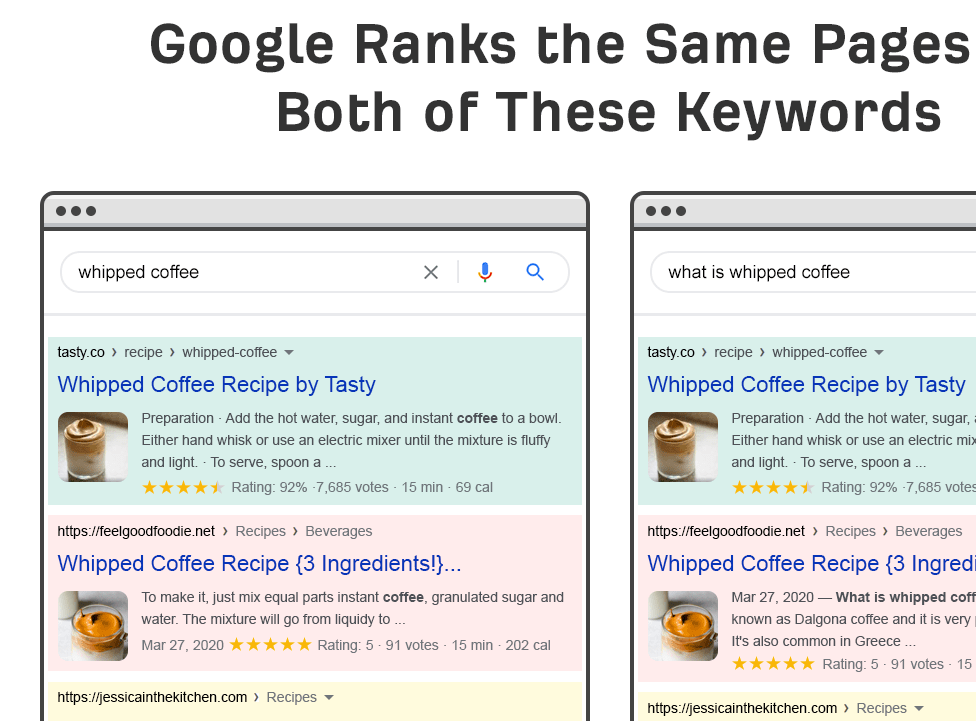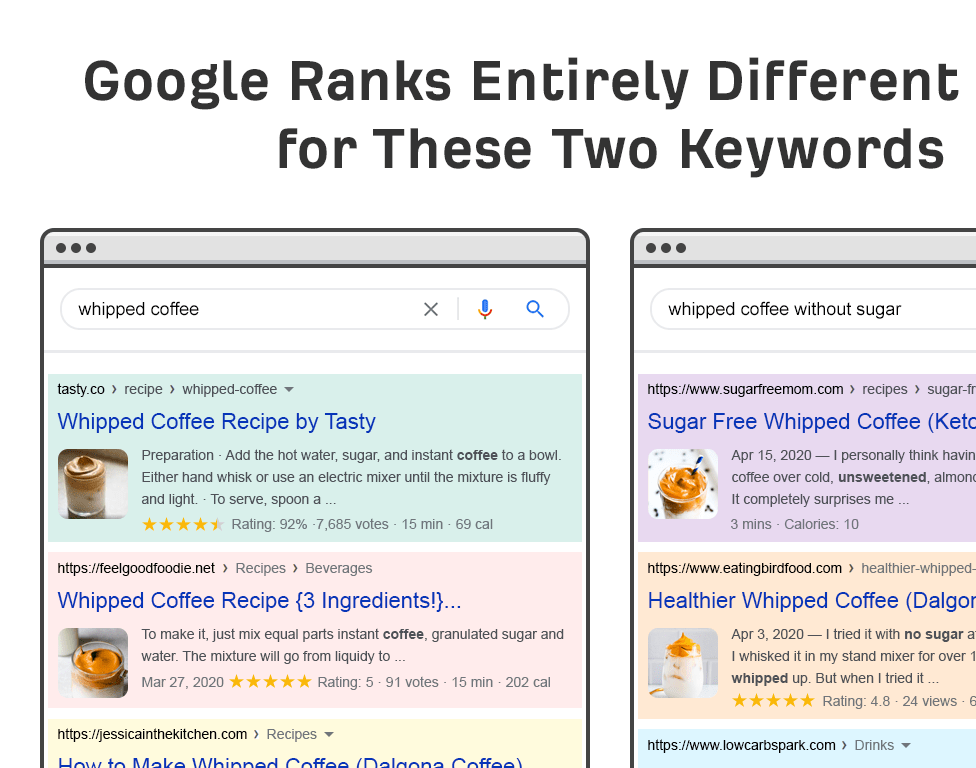For every keyword on your list, you need to create the right kind of page and content to address it. Understanding how to do this is a crucial step in the keyword research process. Luckily, you can do it in two simple steps.
Identify search intent
Identify the Parent Topic-
Let’s say that you’ve got these keywords on your list:
- how to make whipped coffee
- what is whipped coffee
- whipped coffee recipe
- how to make whipped coffee without instant
- whipped coffee without sugar
- You might be wondering, should you build a different page for each keyword or target all of them on a single page? The answer largely depends on how Google sees these keywords. Does it see them as part of the same topic (i.e., how to make whipped coffee)? Or does it see them all as individual topics? For example, we see some of the same pages ranking for “how to make whipped coffee” and “what is whipped coffee.”

That seems to indicate that Google views both of these keywords as part of the same topic. We also see that most of the results for both searches are posts about making a whipped coffee. That tells us that “what is whipped coffee” is a subtopic of the broader topic of how to make a whipped coffee. For that reason, it would probably make more sense to target both of these keywords on a single page than to create two separate pages. However, if we look at the results for “whipped coffee without sugar,” we see the opposite:

Almost all of the results are specifically about making a sugar-free, healthy whipped coffee, not just any old whipped coffee. That tells us that “whipped coffee without sugar” isn’t part of a broader topic of making a whipped coffee (even though a whipped coffee without sugar is, in fact, still a whipped coffee). So we’d probably need to write a separate guide to rank for this keyword.
The problem with this approach is that it’s very manual and slow, so if you have many keywords to analyze, it can take quite some time. In Keywords Explorer, our solution to this problem is to show a “Parent Topic” for each keyword. It tells you whether we think you can rank for your target keyword while targeting a broader topic instead. To identify the “Parent Topic,” we take the top-ranking page for each keyword and find the keyword that sends the most traffic to the page.
Identify search intent
- Let’s say that you have these keywords on your list:
- coffee grinder
- latte vs cappuccino
- single cup coffee maker
- arabica coffee
- how to brew cold brew coffee
- manual burr coffee grinder
- If you run an online store with a blog, you need to understand which to target with blog posts vs. product pages. For some keywords, this is obvious. You wouldn’t create a product page for “how to brew cold brew coffee” because that doesn’t make sense. Searchers want to know how to make cold brew coffee, not buy brewing equipment.
But what about a keyword like “manual burr coffee grinder?” Should you target this with a blog post about the best burr coffee grinders or an ecommerce category page showing all the burr coffee grinders you sell? From here, you can analyze what we like to call the three C’s of search intent to learn how best to target the keyword:
- Content type
- Content format
- Content angle
Content type: Content types usually fall into one of five buckets: blog posts, product, category, landing pages, or videos.
Content format: Content format applies mostly to ‘informational’ content. Typical examples are how-tos, listicles, news articles, opinion pieces, and reviews.
Content angle: Content angle is the main selling point of the content. For example, people searching for “how to make latte” seem to want to know how to do it without a machine or any special equipment.